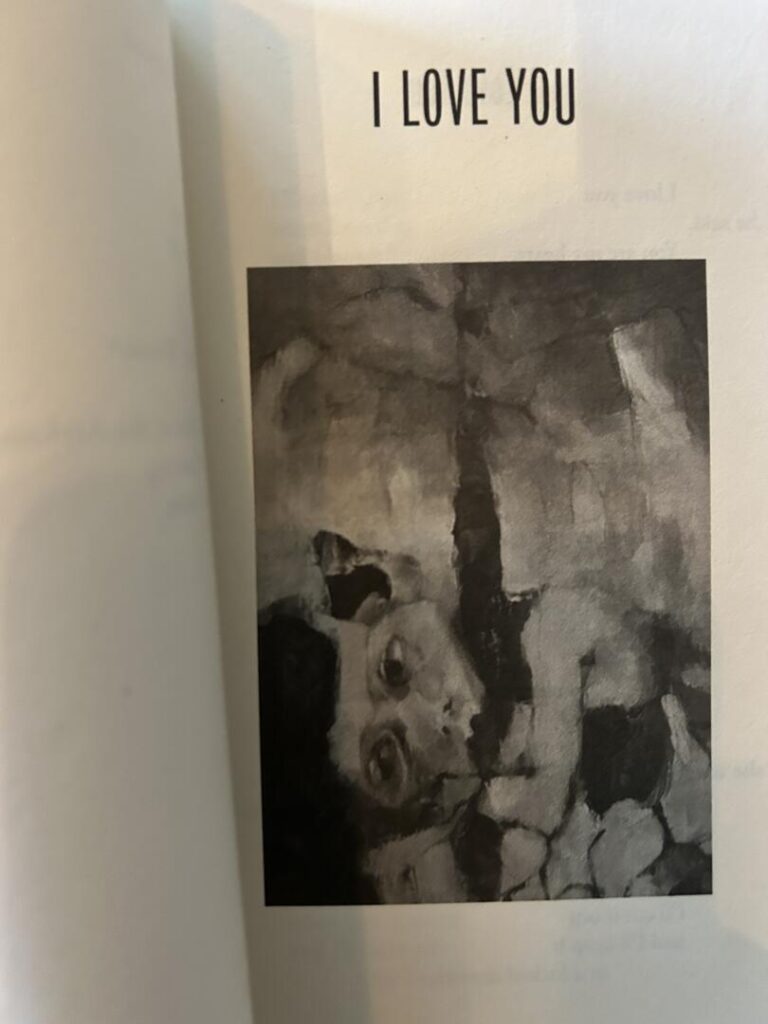The first poem in this collection, and certainly one of its most poignant, is “I Love You.” This piece serves as an ode to an earlier self, perhaps a much younger and more naive version. While the poem is heartbreaking, it also functions as a siren song—a warning about the other kind of relationship. One that replaces hope with despair and held together with love bombs and breadcrumbs. It’s perhaps the worst type of relationship one can endure, yet many of us find ourselves neck-deep somewhere between Stockholm Syndrome and insanity.
Having heard Hosein recite this live many times, I never tire of it. To write with such brutal clarity, Hosein had to endure a journey that many do not survive. Those who do often discover a new version of themselves, a phoenix rising from the ashes.

One of the many extraordinary illustrations by Jennifer Hosein that mark new chapters in the book.
In “A Map Of Rain Days”, Hosein’s use of imagery is vivid and visceral, inviting readers to empathize with her sense of being overwhelmed and strained. Her inherited struggles and legacy manifest in physical pain, creating a juxtaposition of physical deformity against emotional turmoil. This quickly introduces themes of radical acceptance and resilience.
“Angolan Dance” signifies the loss of innocence as we transition from pure infantile innocence to a marred, obscured reality we are unprepared to face. The symbolism of dance as both a literal and metaphorical expression of freedom underscores the poem’s reflective tone.
In reviewing a poet’s collection, I am always curious about the first and last works chosen. Hosein opens with a work about an unrequited love, one built upon layers of codependence and fortified with years of gaslighting and emotional dissonance.
My new favorite poem, “After the Fire at the Asylum,” deftly explores themes of historical suffering, gendered oppression, destruction and entrapment. Through evocative imagery and poignant contrasts, it paints a powerful and haunting picture of a place marked by enduring sorrow and unrelenting confinement. The distinct portrayal of women’s and men’s suffering adds depth to the poem’s exploration of historical trauma.
“Light” appropriately wraps up the collection, creating an atmosphere of confinement and neglect marked by the mother’s absence, leaving the girl in an environment of monotony and emotional emptiness. Yet, the poem concludes with the girl reaching “for the sliver of light” left behind in her mother’s wake. “A Map Of Rain Days” is a deeply reflective and emotionally rich journey as Hosein carves out a silver-lining amidst the rubble.
Buy the book.
Review by Raymond Helkio for
The Reading Salon.

